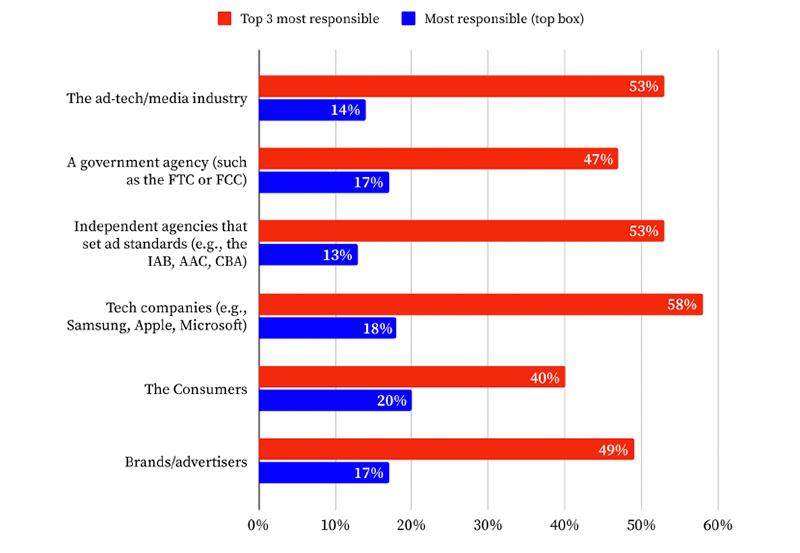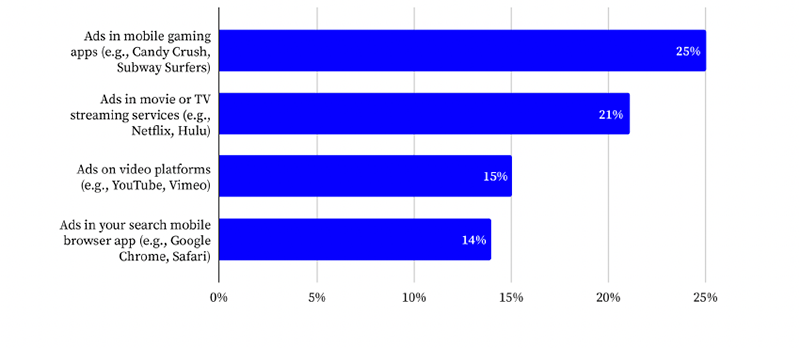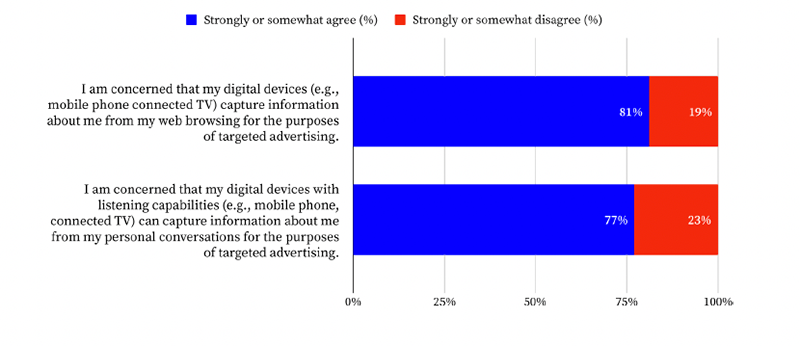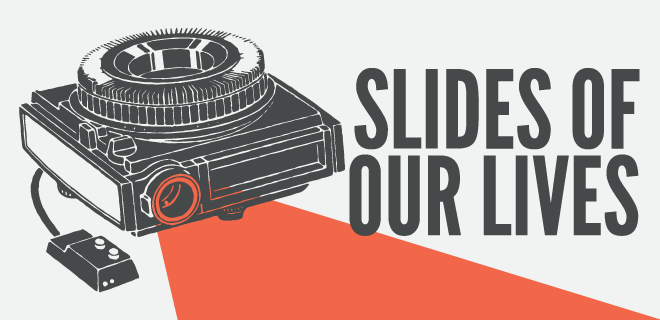
Intrusive ads frustrate 73% of desktop users—more than privacy or security concerns. Discover how digital media owners can tackle this challenge by adopting user-centric strategies, with insights from Jan Wittek, Chief Commercial Officer at eyeo, and the latest eyeo-Harris Poll report.
Consumers are pissed off. They’ve had it up to here with intrusive digital ads.
A new Harris Poll report, commissioned by eyeo, sheds more light on this problem. For example, mobile app users report greater frustration with ads (81%) than with privacy concerns (74%) or online security (76%).
If users are unhappy, publishers see higher bounce rates or ad blocker adoption, brands see diminished ROI, and ad tech vendors face reduced demand for their solutions.
The ad tech ecosystem walks a tightrope between revenue growth and user satisfaction, with one critical question looming: Have we done enough to deliver on the promise of a better digital experience?
In this conversation with Jan Wittek, Chief Commercial Officer at eyeo, he prescribes how publishers can rethink their monetization strategies to address consumer frustrations. Leveraging insights from the eyeo-Harris Poll report, Wittek illuminates actionable steps to align sustainable advertising practices with user expectations.
Putting Users in the Driver’s Seat
Insight: The Harris Poll found that 89% of users want limits on ad disruptiveness and better controls for the ads they see, signaling a clear call for a more user-centric approach. Mobile app ads rank as the most frustrating format for users, with intrusive formats like autoplay videos topping the list.
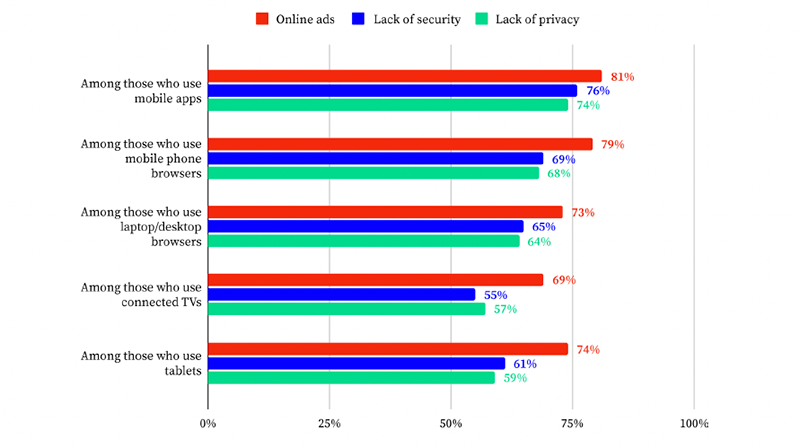
Chart: Percentage of Users Expressing Frustration with Ads Across Platforms (Mobile App: 81%, Desktop: 73%, etc.)
Lynne d Johnson: What practical steps can digital media owners take to address consumer frustration with intrusive ads while maintaining revenue goals?
Jan Wittek: Digital media owners need to strike a balance between user experience and revenue goals, and the way to do this is to put the user in the driver’s seat–which can actually enhance your ad monetization efforts. Having the best of both worlds is possible, and we’ve seen it in those who adopt ad-filtering technologies and standards like Acceptable Ads.
By focusing on user-friendly ad formats and respecting privacy preferences, digital media owners can create advertising experiences that resonate with users and deliver their demands while still generating revenue.
This approach addresses user frustration and also fosters a more sustainable and beneficial advertising ecosystem by preventing more users from switching to ad blockers that eliminate monetization possibilities for all content creators on the web.
Shared Accountability in Ad Regulation
Insight: The Harris Poll revealed that consumers view ad regulation as a shared responsibility among tech companies, advertisers, and publishers. Interestingly, 40% believe users should play a role in managing ad disruptiveness themselves.
LdJ: Given that consumers are asking for shared accountability across tech companies, publishers, and advertisers, what frameworks or collaborations have proven effective—or could be developed—to manage ad disruptiveness more effectively?
JW: I think it’s worthwhile to consider a cross-industry working group that addresses those demands. All stakeholders have a part to play in ensuring that the ad ecosystem remains balanced, and we must ensure that all the different needs are covered.
The eyeo-Harris Poll research shows that consumers see various parties accountable, but it is important to recognize that they don’t necessarily know how the industry works. With that in mind, I want to note that strong buy-in from brands/advertisers will be crucial since their dollars drive the marketplace.
With that said, user-centricity is vital and should be at the forefront of any long-lasting business strategy.
Innovation in Mobile and In-App Ad Formats
Insight: Ads in gaming apps were ranked as the most frustrating by 25% of users, with automatic video ads taking the lead as the single most frustrating format for 55% of respondents. Innovations like playable ads and native integrations within game environments are beginning to address this frustration by providing less disruptive experiences.
LdJ: Mobile and in-app ads rank as the most frustrating for users. What innovations or ad formats have successfully reduced frustration in these environments?
JW: In the mobile and in-app space, we’re seeing a complex landscape where user frustration with ads is driving innovation–albeit slowly, but surely. We know that ad-blocking rates on mobile devices have also reached 22%, indicating a significant desire for less intrusive experiences. This trend is pushing the industry to develop more user-friendly ad formats.
For example:
Mobile game developers use various ad formats strategically to balance user experience and monetization.
- Interstitial ads are typically shown on full screen (which makes them intrusive), but developers have started showing them during natural breaks in gameplay (like between levels), to minimize disruption.
- Banner ads are seen as less profitable as they are shown at the top or bottom of the screen but they’re not being ruled out – many in the industry still think it’s still useful as part of a diverse ad strategy.
- Playable ads are interactive mini-games that let users try a game before installing, which gives them control over how and if they choose to engage with the ad.
- Native ads are being seen more in games designed right into the look and feel of the in-app game environment. They’re there, in plain sight, but they’re non-intrusive. While they might get ignored, they’re still offering users choice and control in engagement.
This mix of ad types puts the user experience first—prioritizing long-term player satisfaction over short-term ad revenue. It creates a less intrusive advertising experience while still generating revenue for developers.
Source: In-Game Mobile Advertising: Top Ad Formats & Strategies
The Promise and Pitfalls of AI in Ad Tech
Insight: AI holds the potential to revolutionize ad targeting, yet it also raises privacy concerns. Eighty-one percent of respondents are uneasy with ads targeting their browsing data, highlighting the need for transparency and restraint in AI-driven ad strategies.
LdJ: How can digital media owners leverage AI to enhance ad targeting and user experience without getting trapped in creating more intrusive or poorly targeted ads?
JW: Leveraging AI for ad targeting and user experience is a double-edged sword. It offers exciting opportunities for contextual targeting, predictive analytics, dynamic creative optimization, and real-time ad quality assessment—all useful in shaping a nonintrusive ad experience.
But, we must be cautious not to move into over-personalized marketing strategies and ensure that this doesn’t come at the cost of user privacy. Overall, the principle is clear—with any method we adopt, prioritizing user privacy and transparency is crucial in these AI-driven approaches.
Less Intrusion, More Inclusion: Building Ads That Work for Everyone
Whether through AI innovation or more user-friendly ad formats, the industry’s efforts must align with consumer demands for less intrusive experiences. Addressing these consumer frustrations with intrusive ads is a challenge for the ad tech ecosystem, but it’s also an opportunity to rebuild trust, foster engagement, and protect the open web.
By taking actionable steps—embracing ad-filtering technologies, innovating ad formats, and collaborating across the ecosystem—industry players are charting a course to reach revenue goals while keeping users satisfied.
To gain more insights from the eyeo-Harris Poll Whitepaper, Digital “Ad-tastrophe”: Consumer & Industry Perspectives, download it here.
